On Friday, August 12, I was flying home to Louisiana after working in the Fairfax, Virginia, office that week. I live in Springfield, about 60 miles north of our office in New Orleans. I noticed that my weather apps had been posting storm warnings for southeastern Louisiana, and then I began to get notices about school closures in our area due to rising rivers. As soon as I arrived home, I pulled up information from our local river gauges and checked the readings for the Tickfaw, Amite, and Blood Rivers—all sources for flooding in our community. At that time, the flood of record for our area was in 1983, which hit 21.6 feet at the local gauge on the Tickfaw River. Now, forecasters were predicting the river to go as high as 27 feet. I thought, "This is going to be devastating."
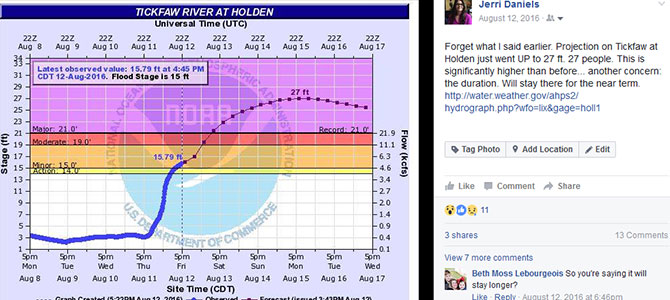
Impending Danger: Getting the Word Out
I began posting information on Facebook so that friends and neighbors would be aware of the potential impact. I was able to put my skills as a GIS specialist and certified floodplain manager to work and create maps to show people that if they lived below a certain elevation, they needed to be aware of the danger. My husband and I sent our children to stay with friends who live on higher ground, and then we did what we could to prepare our home, creating a makeshift water barrier with plastic sheeting and sand bags.
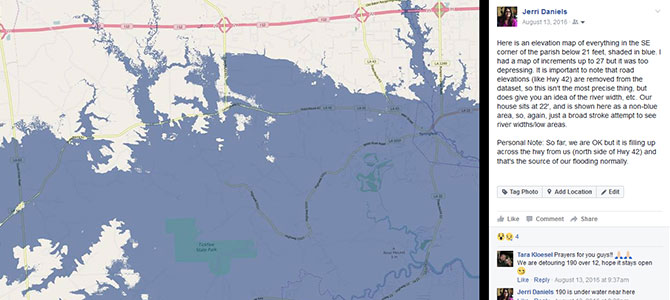
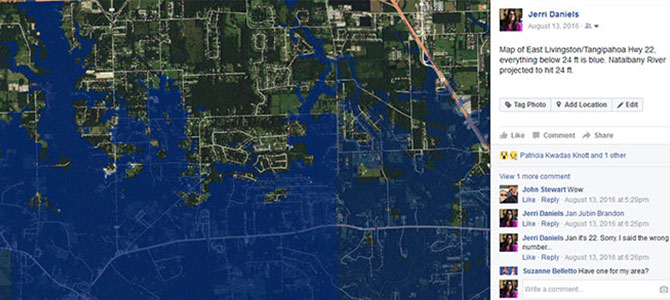
By Saturday morning, our front yard was a lake. The water came to an inch below our front porch. The storm turned out to be a monsoon depression that hovered over our area for nearly four days. The rainfall topped out at 22 ½ inches—thankfully not the 27 inches predicted, but still disastrous for 22 parishes in the southern part of the state. Across the street, my neighbor's house was flooded with four feet of water. My sister-in-law's apartment nearby was also flooded. Our town was under water, and people were being rescued from their homes by airboat. Although I knew the flooding would be severe, it was still shocking.
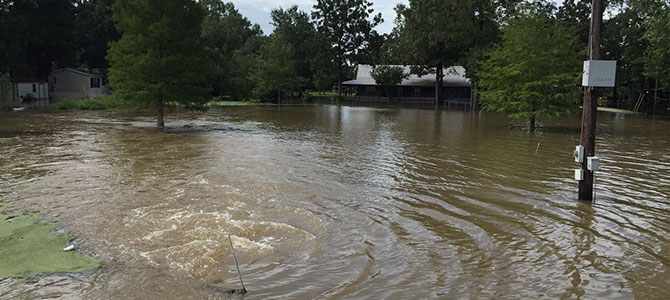 View of my house from State Highway 42.
View of my house from State Highway 42.
We were fortunate that our home was not damaged, but we were also trapped by the water surrounding us for four days. Cell service was poor, so Facebook became the primary means of communication. As soon as we could get out, we began helping with the recovery in our neighborhood. Everyone pitched in and cleaned out an abandoned grocery store that had flooded, and we used that space to gather and distribute food and cleaning supplies for local families. Neighbors helped neighbors throughout the community gut houses so the recovery process could begin. I can honestly say it's the most physical labor I've experienced in my life! All of us are now very good at "demo day" projects like ripping out glued down oak floors.
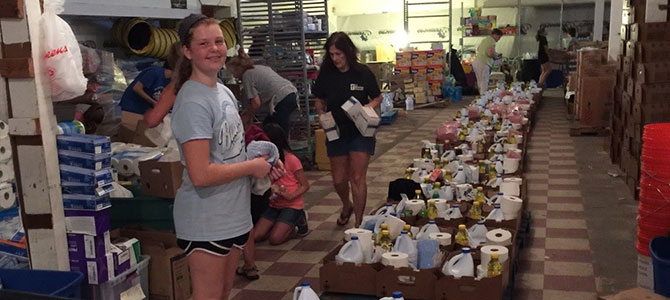 My daughter, Marina, preparing supply boxes to be handed out with donated cleaning supplies.
My daughter, Marina, preparing supply boxes to be handed out with donated cleaning supplies.
Long Days in the Field: Helping Homeowners
I also began fielding calls from our Fairfax office and the Federal Emergency Management Agency (FEMA), our long-time client in disaster response efforts. FEMA needed immediate information on the flooding, and our geospatial specialists in New Orleans and Fairfax worked around-the-clock shifts to assemble a flood depth grid. The grid depicted impacted areas and identified structures that may have been damaged. Under the guidance of our senior project manager, Catherine Bohn, our staff produced the first grid within 48 hours of FEMA's request, which came that Friday evening on August 12. We continued to update it for several weeks.
I then joined Dewberry's teams in the field who began to perform damage estimates for property owners throughout the impacted parishes. Working with our partners under the STARR II contract, we were tasked with assessing damage to an estimated 150,000 structures. We worked six days a week for several weeks, visiting 30 to 40 properties a day and sharing information on local disaster recovery centers, flood insurance requirements, and the process to file claims and obtain rental assistance. It felt good to be able to offer assistance to these homeowners, some of whom had just returned to their homes following extensive flooding last March—only to face more flooding with the August storm. With our visit and assessment, they were one step closer to getting back into their homes again.
Rural Resilience in the Aftermath of the Floods
The recovery in our community and throughout the region continues. Christmas was very interesting with creative trees made from ladders and a lot of folks still living in campers. Studies have shown that rural areas are more resilient in times of disaster, and we certainly saw evidence of that around here. People got out as soon as they could, rolled up their sleeves, and got to work. Everyone pitched in to help their neighbor. The devastation was horrible, but what I will remember most is the kindness, the hard work, and the resilient attitude we shared.
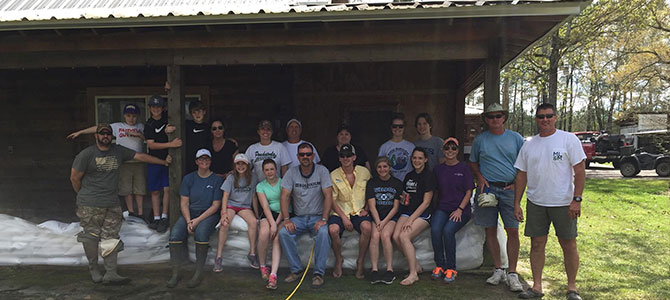 Friends showed up in less than an hour to help sandbag our house. It's great to live in a small town!
Friends showed up in less than an hour to help sandbag our house. It's great to live in a small town!